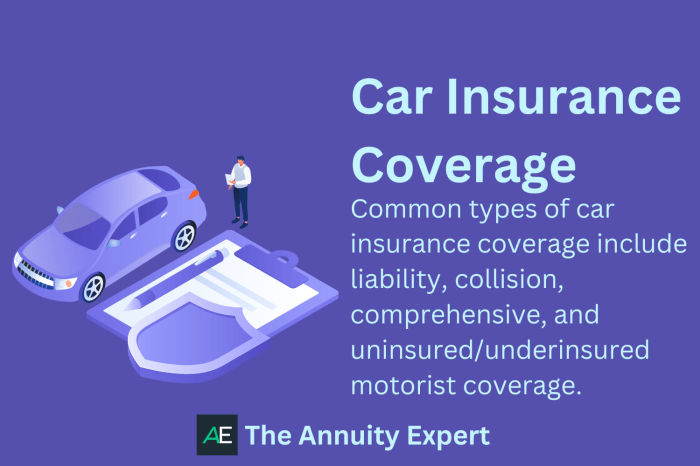How to find the best car insurance deals online is a question many drivers grapple with. Navigating the complex world of insurance quotes can feel overwhelming, but with a strategic approach, securing significant savings is achievable. This guide will equip you with the knowledge and tools to confidently compare policies, understand coverage options, and ultimately find the best car insurance deal tailored to your specific needs.
From utilizing online comparison tools and contacting insurance providers directly to analyzing quotes and negotiating premiums, we’ll explore every aspect of the process. We’ll also delve into crucial elements like understanding policy documents and maintaining your coverage to ensure you remain protected while optimizing your costs. By the end, you’ll be empowered to make informed decisions and save money on your car insurance.
Understanding Your Car Insurance Needs
Finding the best car insurance deal involves understanding your specific needs and how various factors influence your premiums. This section will guide you through identifying key factors and selecting appropriate coverage.
Factors Influencing Car Insurance Costs
Several factors significantly impact your car insurance premiums. These include your age, driving history (accidents, tickets), the type of vehicle you drive (make, model, safety features), and your location (accident rates, theft rates in your area).
Car Insurance Coverage Types and Costs
Different coverage types offer varying levels of protection and consequently, different cost ranges. Understanding these differences is crucial for making an informed decision.
| Coverage Type | Coverage Details | Typical Cost Range | Advantages/Disadvantages |
|---|---|---|---|
| Liability | Covers injuries or damages you cause to others. | $300 – $1000 annually (varies greatly based on limits) | Advantages: Required by law in most states. Disadvantages: Doesn’t cover your own vehicle or injuries. |
| Collision | Covers damage to your car in an accident, regardless of fault. | $300 – $800 annually (depends on deductible and vehicle value) | Advantages: Protects your vehicle. Disadvantages: Higher premiums. |
| Comprehensive | Covers damage to your car from non-accident events (theft, vandalism, weather). | $100 – $500 annually (depends on vehicle value and location) | Advantages: Broad protection. Disadvantages: May be unnecessary for older vehicles. |
Importance of Accurate Information
Providing accurate information during the quoting process is paramount. Inaccurate information can lead to higher premiums or even policy cancellation. Ensure all details, including your driving history and vehicle information, are completely correct.
Utilizing Online Comparison Tools: How To Find The Best Car Insurance Deals Online

Online comparison websites offer a convenient way to gather quotes from multiple insurers simultaneously. However, it’s important to understand both their advantages and disadvantages.
Advantages and Disadvantages of Online Comparison Websites

Using online comparison tools streamlines the quote-gathering process, saving time and effort. However, they might not include every insurer and the presented quotes may not always reflect the best possible rates available.
Popular Online Car Insurance Comparison Platforms
- Company A: Known for its user-friendly interface and wide range of insurer options. May offer personalized recommendations based on your profile.
- Company B: Offers a detailed comparison feature, allowing you to easily compare quotes side-by-side. Might have a more limited network of insurers.
- Company C: Focuses on providing customized quotes based on specific needs. Might require more detailed information upfront.
Steps Involved in Using an Online Comparison Tool
- Visit the website and provide basic information (age, location, vehicle details).
- Select desired coverage levels.
- Review and submit your information.
- Compare the quotes received from different insurers.
- Select the best option and proceed to purchase the policy.
Directly Contacting Insurance Providers
Getting quotes directly from insurance companies allows for more personalized interaction and potential negotiation. This section Artikels reputable insurers and the process of obtaining quotes.
Reputable Car Insurance Companies and Their Online Platforms
Many well-established insurance companies have user-friendly online platforms for obtaining quotes. Examples include (but are not limited to) Progressive, Geico, State Farm, Allstate, and Nationwide. Each company’s website typically offers a straightforward quote process.
Obtaining Quotes Directly from Insurance Company Websites
Most company websites have a simple quote request form. You typically need to provide information about your vehicle, driving history, and desired coverage.
Customizing Coverage Options Directly with an Insurer
Once you receive a quote, you can usually adjust your coverage levels (deductibles, liability limits) to find the best balance between cost and protection. Contacting the insurer directly allows for clarification on policy details and personalized adjustments.
Analyzing and Comparing Quotes
Once you’ve gathered quotes from various sources, a systematic approach is crucial for identifying the best deal. This section provides a checklist and strategies for comparison.
Checklist for Evaluating Car Insurance Quotes, How to find the best car insurance deals online
Use this checklist to compare quotes effectively:
- Coverage levels (liability, collision, comprehensive)
- Premium cost (annual and monthly)
- Deductible amount
- Customer reviews and ratings
- Policy terms and conditions
Comparing Quotes Side-by-Side
To facilitate comparison, create a table or spreadsheet listing the key features and costs from each insurer.
- Insurer A: $800 annually, $1000 deductible, good customer reviews.
- Insurer B: $750 annually, $500 deductible, average customer reviews.
- Insurer C: $900 annually, $250 deductible, excellent customer reviews.
Understanding Policy Details Before Making a Decision
Thoroughly review the policy documents before committing to a policy. Pay close attention to exclusions, limitations, and any additional fees.
Securing the Best Deal
This section explores strategies to lower your premiums and secure the most favorable deal.
Negotiating Lower Premiums
Don’t hesitate to contact insurers directly to discuss your quote and explore potential discounts. Highlight your clean driving record or any other factors that might qualify you for lower rates.
Impact of Discounts
Many insurers offer discounts for bundling insurance policies (home and auto), maintaining a safe driving record, being a good student, or installing anti-theft devices.
Maintaining a Good Driving Record
A clean driving record is the most significant factor in determining your insurance premiums. Avoid speeding tickets, accidents, and other driving violations to keep your rates low.
Understanding Policy Documents
Your car insurance policy document contains crucial information about your coverage. Understanding these details is vital.
Key Elements in a Car Insurance Policy Document

Review your policy for coverage limits, deductibles, exclusions, and the process for filing a claim. Pay attention to the effective dates and any cancellation clauses.
Common Policy Terms and Their Implications
| Term | Definition | Importance | Example |
|---|---|---|---|
| Deductible | The amount you pay out-of-pocket before your insurance coverage kicks in. | Affects your premium cost; higher deductible means lower premium. | A $500 deductible means you pay the first $500 of any claim. |
| Liability Limits | The maximum amount your insurance will pay for damages or injuries you cause to others. | Protects you from significant financial liability in an accident. | 25/50/25 means $25,000 per person, $50,000 per accident for bodily injury, and $25,000 for property damage. |
| Premium | The amount you pay regularly for your insurance coverage. | Your regular payment for insurance protection. | A monthly premium of $100. |
Understanding and Interpreting Your Policy
- Read the policy document carefully.
- Contact your insurer if you have any questions.
- Keep a copy of your policy for your records.
Maintaining Your Coverage
This final section covers updating your information, making claims, and avoiding common mistakes.
Updating Insurance Information
Notify your insurer promptly of any changes, such as address changes, vehicle changes, or driver changes. Failure to do so can invalidate your coverage.
Making a Claim
If you need to file a claim, contact your insurer immediately. Follow their instructions carefully and provide all necessary documentation.
Avoiding Common Car Insurance Mistakes
Avoid lapses in coverage, provide accurate information, and understand your policy details to avoid costly mistakes.
User Queries
What is the best time of year to buy car insurance?
While there’s no single “best” time, shopping around closer to your renewal date allows for better comparison with your current policy.
Can I get car insurance without a driving history?
Yes, but expect higher premiums. Insurers will assess your risk based on other factors like age and location.
How often should I review my car insurance policy?
At least annually, or whenever there’s a significant life change (new car, address change, etc.).
What if I have a lapse in my car insurance coverage?
This can significantly impact your future premiums, making it harder and more expensive to obtain coverage.